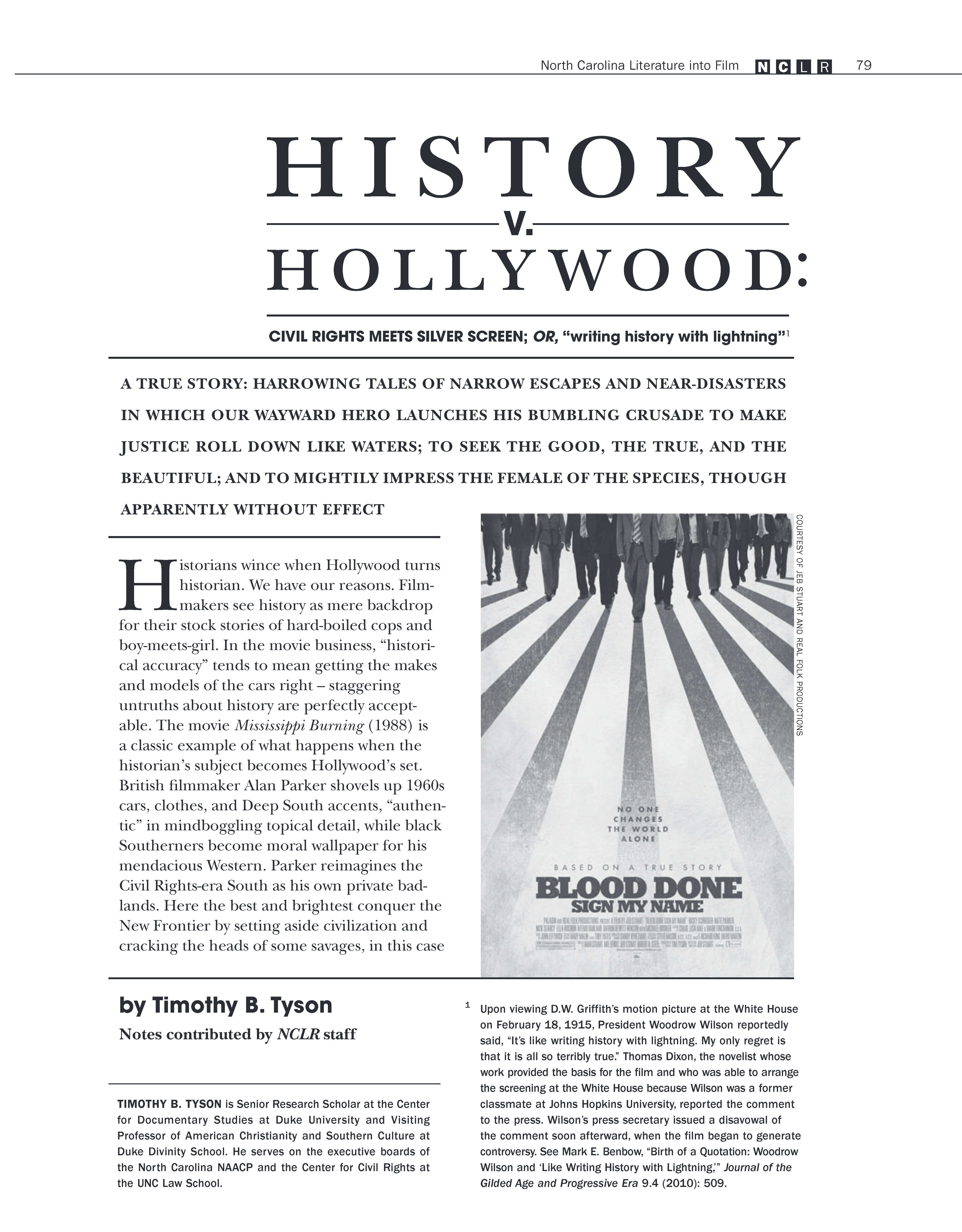Friday from the Archives: ““History v. Hollywood: Civil Rights Meet Silver Screen; or, ‘writing history with lightning,’” by Timothy B. Tyson from NCLR 21 (2012)
Historian Tim Tyson shared his experience working with Screenwriter & Director Jeb Stuart on the movie adaptation of Tyson’s memoir Blood Done Sign My Name, which was released in 2010. It was the second time Tyson had assisted with adapting the book after working with NC playwright and actor Mike Wiley on a theatrical version.
Tyson shares about meeting Stuart (who also grew up in North Carolina) and discussing how to translate the tale of Oxford NC in the 1960s in the book to the big screen. He wrote, “Of course, the book is roughly six or seven times the length of the screenplay, so a number of narrative threads had to go. A screenplay can develop only a few characters, so the population had to plummet. At the same time, the filmmaker draws characterizations with a telling sweep of the camera that might have taken many pages for the writer. Adapting a book means cutting sharply while preserving the heart of things, learning to think in telling pictures, and simplifying the character structure while making sure that the work of the story still gets done.”
From walking the streets of Oxford where the events actually happened, to meeting participants or their immediate family members, Tyson took Stuart into the heart of his story. Unlike other book authors who don’t spend much–if any– time on the set of the movie adaptation of their work, Tyson was present the entire time. Largely because of this close experience, Tyson is proud of the finished film. “This movie brings the complex battles of the Black Power era to vivid life,” he wrote, “in which we can see the faces of flawed, well-meaning
people like ourselves, snared in a hard history and trying to do the right thing, which is not always clear and often isn’t enough. We’re all in there, black and white, comfortable and impoverished, educated and otherwise, fearful and prophetic, all of us human.”
Read the entire essay on GaleCengage or purchase a copy of the 2012 issue.
